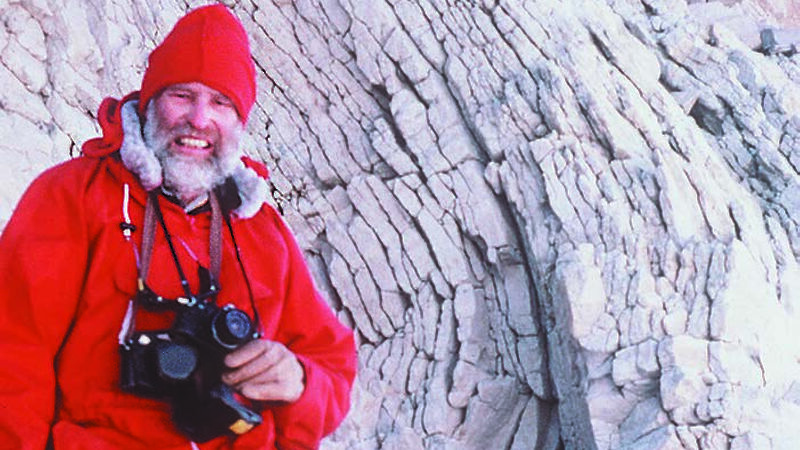Early in 2002 the Australian Antarctic scientific community was saddened to learn of the death of Don Adamson, a person who was in his heaven fossicking around in southern regions during many a summer season either in mainland Antarctica or on Macquarie Island. Don was a son of the Australian bush where he lived his early childhood before moving with his parents to Sydney. Don was educated at Sydney University in biological sciences where he received his doctorate. He was appointed to a lectureship in the School of Biological Sciences at the then relatively new Macquarie University from where for many years he taught, researched and positively influenced the lives of many students and colleagues. He was well known throughout Australia and overseas for his work in biological sciences, in archaeology and geomorphology in Africa, and his work on various aspects of the environment of Antarctica. For this work Macquarie University rewarded him with an Associate Professorship, a well-deserved accolade for a life spent endeavouring to resolve scientific problems.
Apart from previous incidental meetings, I first got to know Don in 1986 when we joined forces to work together on the ANARE expedition that established the Sir Edgeworth David summer field base in the Bunger Hills. During two months working daily with Don in the field I learnt a lot about him and his achievements in Antarctica. It is not that he would have told me, as Don was a modest person, but that during the course of our scientific discussions his past contributions became evident. At various times Don worked in the Vestfold Hills, Larsemann Hills, Stillwell Hills, Bunger Hills, at Beaver Lake and on Macquarie Island. His most important scientific contributions were the finding of the diatomite deposits at Marine Plain in the Vestfold Hills where the world famous cetacean fossils were later found. Together with John Pickard he found the fossil clam Clamys tuftsensis that dated the deposits as of Pliocene age and showed that the sea had transgressed the Vestfold area around three million years ago. The Pagodroma Tillite at Pagodroma Gorge also fascinated Don, and he made observations on its possible age. Notable amongst his numerous publications was a considerable contribution to Antarctic Oasis (edited by John Pickard, Academic Press, 1986).
Don had a love of the outdoors and a concern for the environment – not a shallow concern but one that required him to satisfy his own mind on problems through scientific explanation. Working with Don one soon discovered that he was a very acute observer, often seeing details of the landscape that others would have missed. One also realised that he was full of ideas, ideas that had to be tested fully with the gathering of facts.
Don would not just accept current views. He was like a terrier with a bone. If the current view did not fit the observed facts as he saw them then the view would have to be revised.
Don was a strong man both physically and mentally. I remember being with Don at the end of the Edisto Glacier when the weather ‘clagged in’ and the helicopter pilot advised he could not land and we would have to make it back to camp. After some exhortation from Don for the pilot to land the wind began to blow as it can only do in Antarctica. Nothing for it but to ‘trog’ as Don would say for about 5 km across the land and sea ice back to Edgeworth David base. During that walk the wind was so fierce that it caught Don’s pack and spun him around on the sea ice before flattening him. When I asked him was he OK the answer was ‘sure I’m OK’ as I helped him to his feet. We returned to camp just in time to catch one of the tents taking off with the wind.
During the time at Bunger I had been focused mainly on studying the raised beaches. Don was anxious to spend quite a bit of time on the ‘ice-edge’ where the continental ice sheet abuts the hills. When we went to the ice-edge I realised that these excursions really summed up ‘Don the scientist’ who always wanted to test the edges of theory and was sometimes slightly impatient with those taking a more cautious approach. However, during his career he pushed back frontiers of knowledge in biology, archaeology and geomorphology, and showed himself as a remarkable interdisciplinary scholar not dissimilar to a well-versed natural philosopher of late Victorian times.
Don was also a generous man. Apart from the knowledge that he gave so willingly to all who learned from or worked with him, I remember a small event that indicated his extreme generosity. During the summer of 1986 at Edgeworth David base two skuas strutted around the ‘melon’ hut that we called the mess. They were such regular visitors that we named one Edgeworth and the other David. One day when Don and I were about 4 kilometres from the camp we realised that Edgeworth and David had followed us towards Lake Figurnoe. When we sat down briefly in the sunshine behind a rock for lunch the skuas were still present. It was not long before Don was sharing his limited lunch of cheese and rather dry biscuits with Edgeworth and David.
With the death of Don Adamson the Australian Antarctic scientific community has lost a good friend, a man of ideas, a man who has made outstanding scientific contributions, and a strong, humble and generous person.

